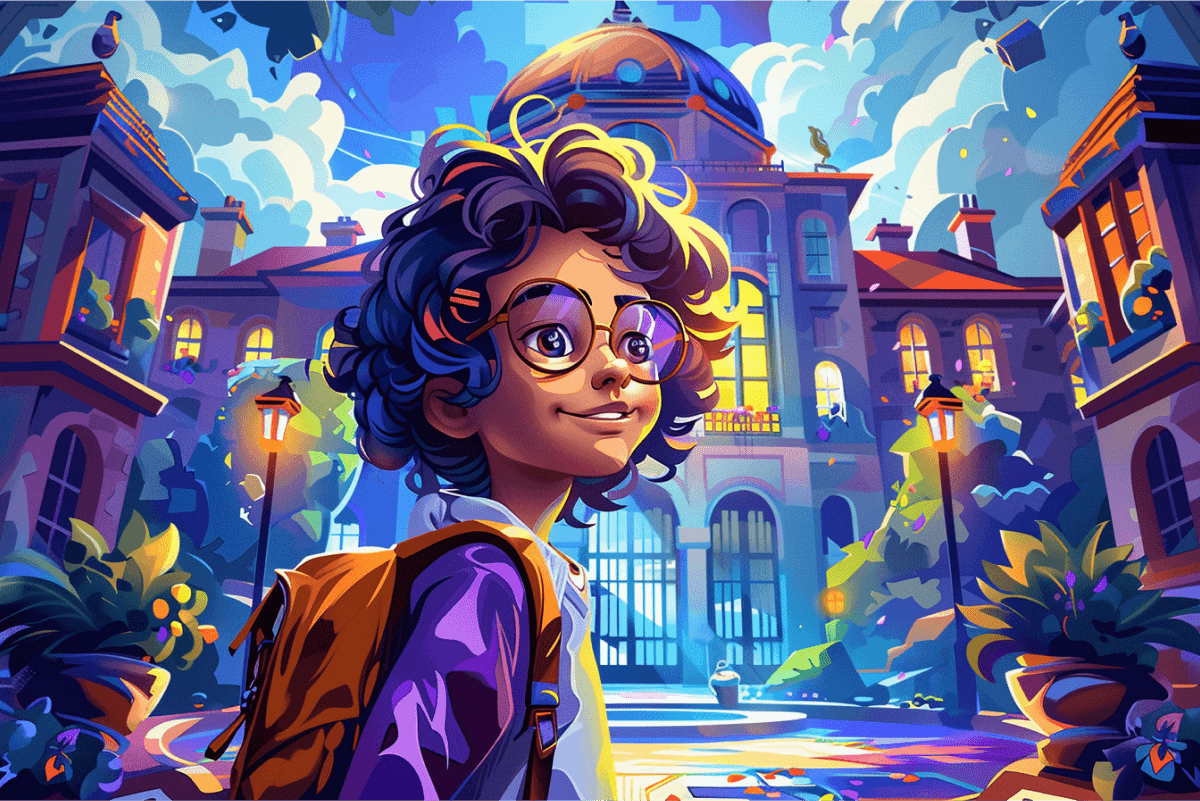Starting off the school year on a positive note is crucial for middle school students. Fun back to school activities can help create an engaging and supportive learning environment. In this article, we will explore various back to school activities for middle school students that foster a positive learning environment, encourage student engagement and participation, break the ice on the first day, promote team building, offer educational opportunities, and incorporate technology into the classroom.
Understanding the Importance of Back to School Activities
Creating a positive learning environment is essential for middle school students to thrive academically and socially. Back to school activities allow students to connect with their peers and develop a sense of belonging in the classroom. These activities can also help reduce anxiety and build confidence, setting a positive tone for the entire academic year.
Furthermore, back to school activities serve as a platform for teachers to assess students’ strengths, weaknesses, and learning styles. By observing how students interact during these activities, educators can tailor their teaching methods to better meet the diverse needs of their students. This personalized approach enhances the overall learning experience and fosters a supportive environment where every student has the opportunity to succeed.
Fostering a Positive Learning Environment
One way to foster a positive learning environment is by implementing activities that promote teamwork, respect, and empathy. For example, teachers can organize group discussions or role-playing scenarios that encourage students to listen to each other’s perspectives and collaborate on finding solutions. By fostering a sense of community and respect, students feel valued and safe, which in turn leads to better engagement and learning outcomes.
Moreover, creating a positive learning environment through back to school activities also involves incorporating elements of diversity and inclusion. By celebrating differences and encouraging open-mindedness, students learn to appreciate various perspectives and develop empathy towards others. This inclusive approach not only enriches the educational experience but also prepares students to thrive in a multicultural society.
Encouraging Student Engagement and Participation
Engaging middle school students can be a challenge, but incorporating interactive activities can make learning more enjoyable and meaningful. One effective strategy is to include hands-on projects that allow students to apply their knowledge and skills in real-world contexts. By encouraging active participation, students become more invested in their learning and develop critical thinking and problem-solving abilities.
Additionally, promoting student engagement through back to school activities involves creating opportunities for student leadership and autonomy. By empowering students to take on roles such as group leaders or project managers, educators nurture essential skills such as communication, decision-making, and teamwork. This hands-on approach not only enhances students’ confidence but also equips them with valuable life skills that extend beyond the classroom.
Creative Ice Breaker Activities for the First Day
The first day of school can be daunting for both students and teachers. Ice breaker activities help create a comfortable and welcoming atmosphere, allowing students to get to know their classmates and teachers in a relaxed setting. These activities can be both interactive games and artistic endeavors.
Interactive games are an excellent way to break the ice and encourage students to interact with one another. Some popular ice breaker games include “Two Truths and a Lie,” where students take turns sharing two true statements and one false statement about themselves. The rest of the group then tries to guess which statement is the lie.
Another fun game is the “Human Bingo,” where students fill out a bingo sheet with different characteristics or experiences. They must then mingle with their classmates, finding someone who matches each characteristic or has had each experience. This activity gets students up and moving while facilitating conversations and connections.
Artistic activities can also be highly engaging and foster creativity among middle school students. For example, teachers can ask students to create a self-portrait using various art supplies or engage them in a collaborative mural project that reflects their hopes and aspirations for the upcoming year.
These creative activities not only help students express themselves but also create opportunities for discussion and reflection about their goals and aspirations. It sets a positive tone for the rest of the school year.
Furthermore, incorporating music into ice breaker activities can add an extra layer of excitement and fun. Teachers can create a playlist of upbeat and energizing songs that students can dance or sing along to. This not only helps break the ice but also creates a sense of unity and camaraderie among the students.
In addition to interactive games and artistic activities, teachers can also introduce team-building exercises to strengthen the bond among students. One example is the “Marshmallow Challenge,” where students work in teams to build the tallest freestanding structure using only spaghetti sticks, tape, and a marshmallow. This activity promotes collaboration, problem-solving, and communication skills.
Moreover, incorporating technology into ice breaker activities can appeal to the tech-savvy generation of students. Teachers can use online platforms or apps that allow students to create virtual collages or digital presentations about themselves. This not only encourages creativity but also enhances digital literacy skills.
Overall, ice breaker activities are essential for creating a positive and inclusive classroom environment. By incorporating interactive games, artistic activities, music, team-building exercises, and technology, teachers can ensure that the first day of school is filled with excitement, engagement, and meaningful connections among students.
Team Building Exercises for Middle Schoolers
Building strong relationships among classmates is crucial for a supportive and inclusive learning environment. Team building exercises not only help students make connections but also promote cooperation, communication, and problem-solving skills.
When students engage in team building activities, they not only develop important social skills but also learn to appreciate the strengths and abilities of their peers. These exercises create a sense of camaraderie and unity within the classroom, fostering a positive and collaborative atmosphere where everyone feels valued and supported.
Outdoor Team Building Activities
Outdoor team building activities provide a change of scenery and an opportunity for students to bond in a different environment. Teachers can organize scavenger hunts or obstacle courses that require students to work together to solve problems and complete challenges. These activities encourage collaboration and build trust among classmates.
Additionally, outdoor activities offer a chance for students to connect with nature and enjoy the benefits of fresh air and physical exercise. By engaging in these activities, students not only strengthen their teamwork skills but also develop a greater appreciation for the outdoors and the importance of maintaining a healthy and active lifestyle.
Indoor Team Building Exercises
Not all team building activities have to take place outdoors. Indoor exercises can be just as effective and sometimes more suitable during inclement weather. For instance, teachers can facilitate team-building games such as “Escape Room” puzzles or group problem-solving activities. Such exercises promote critical thinking, communication, and teamwork.
Indoor team building exercises also provide a controlled environment where students can focus on developing specific skills, such as problem-solving and decision-making, in a structured setting. These activities can be tailored to target areas where students may need additional support, helping them grow both individually and as part of a team.
Educational Activities to Kickstart the Academic Year
Back to school activities can also be designed to kickstart the academic year and get students excited about learning. Incorporating subject-specific activities and cross-curricular opportunities can engage students from the start.
Starting the academic year with a bang sets the tone for a successful and productive school year. It’s essential to create a learning environment that fosters curiosity, critical thinking, and a love for learning. By introducing engaging activities right from the beginning, educators can capture students’ attention and set them on a path towards academic success.
Subject-Specific Activities
Subject-specific activities allow students to dive into specific topics or subjects of interest. For instance, in a science class, teachers can organize hands-on experiments or research projects that align with the curriculum. These activities make learning more meaningful and provide students with real-world applications of their knowledge.
Immersing students in subject-specific activities not only deepens their understanding of the material but also cultivates a sense of curiosity and exploration. By incorporating interactive and hands-on experiences, educators can cater to different learning styles and make complex concepts more accessible and enjoyable for students.
Cross-Curricular Learning Opportunities
Cross-curricular learning opportunities help students make connections between different subjects and see the relevance of their education beyond individual disciplines. For example, a history class could collaborate with an English class to create a historical documentary. This collaborative project not only enhances critical thinking and research skills but also promotes teamwork and communication.
Encouraging cross-curricular collaboration fosters a holistic approach to learning, where students can see how various subjects intersect and complement each other. By breaking down silos between disciplines, educators can help students develop a more integrated understanding of the world around them and prepare them for the complexities of the modern workforce.
Incorporating Technology into Back to School Activities
Technology plays an essential role in students’ lives, so integrating it into back to school activities can greatly enhance engagement and learning experiences.
Fun and Educational Apps
Teachers can leverage educational apps to make learning more interactive and enjoyable. For instance, math teachers can use math game apps that reinforce mathematical concepts through game-based learning. Language arts teachers can utilize apps that encourage reading and writing through interactive storytelling experiences. Check out AdaptedMind or ellii.
Online Collaboration Tools for Students
Online collaboration tools provide opportunities for students to work together on projects, even outside of class. Platforms such as Google Docs or Microsoft Teams allow students to collaborate on shared documents and communicate effectively. This promotes collaboration, critical thinking, and digital literacy skills.
In conclusion, back to school activities for middle school students should be fun, engaging, and promote a positive learning environment. These activities can include fostering a sense of community, encouraging participation, breaking the ice with interactive games and artistic endeavors, building team cohesion, providing educational opportunities, and incorporating technology. By implementing these activities, teachers can set the groundwork for a successful and enjoyable academic year for middle school students.
You might be interested:



